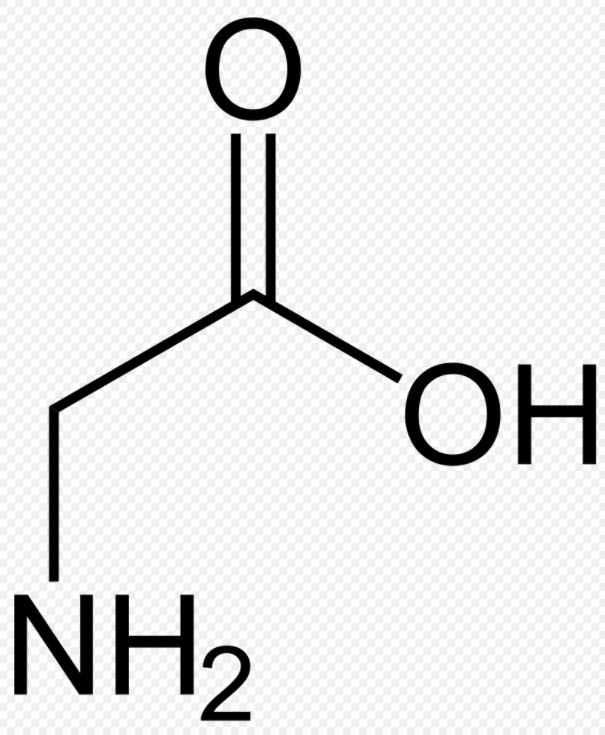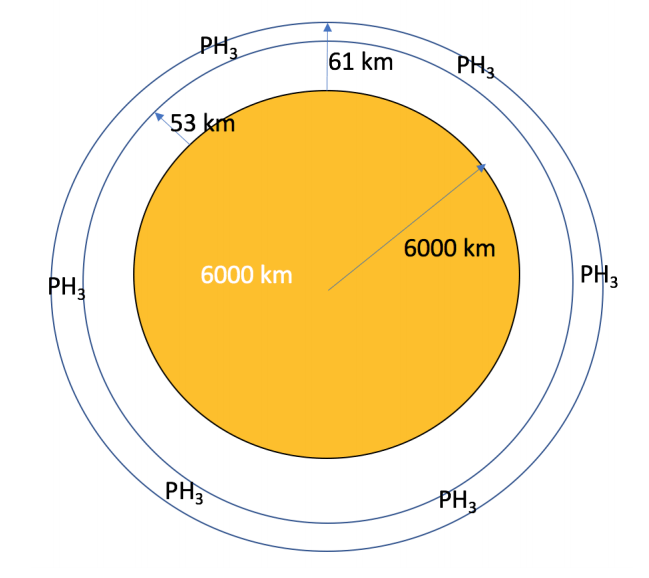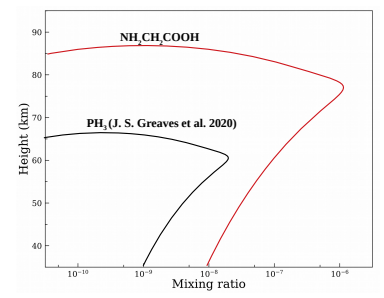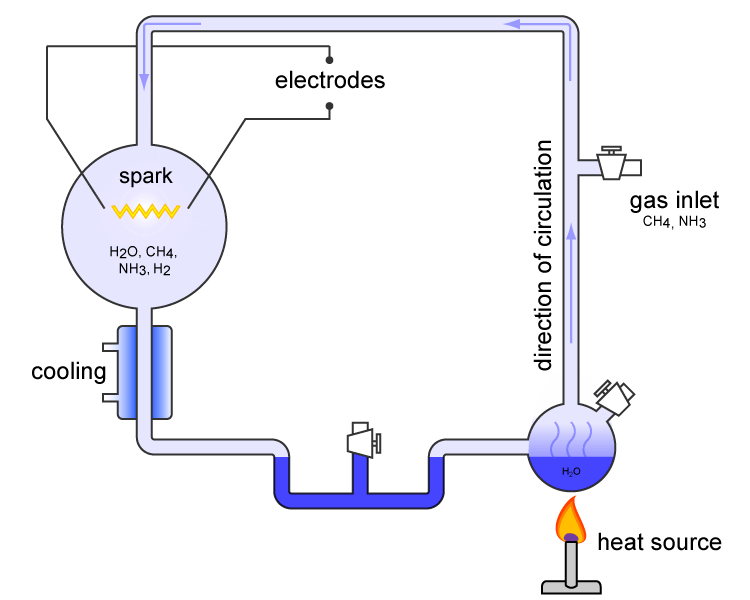Does it feel like all eyes are on Venus these days? The discovery of the potential biomarker phosphine in the planet's upper atmosphere last month garnered a lot of attention, as it should. There's still some uncertainty around what the phosphine discovery means, though.
Now a team of researchers claims they've discovered the amino acid glycine in Venus' atmosphere.
The paper announcing the finding is titled " Detection of simplest amino acid glycine in the atmosphere of the Venus." The lead author is Arijit Manna, a Ph.D. Research Scholar in the Dept. of Physics at Midnapore College in West Bengal, India. The paper is at the pre-print site arxiv.org, which means it hasn't been peer-reviewed and published in a journal... yet.
There are about 500 known amino acids, but only 20 are present in the genetic code. Glycine is the simplest of them.
Though glycine and other amino acids aren't biosignatures, they are some of the building blocks of life. In fact, they're the building blocks of proteins. They were also some of the first organic molecules to appear on Earth. Glycine is important for the development of proteins and other biological compounds.
The researchers used the Atacama Large Millimeter/submillimeter Array (ALMA) to detect glycine in Venus' atmosphere with spectroscopy. They found it in the mid-latitudes, near the equator. That's where the signal was strongest, and there was none detected at the poles.
In their paper, the authors write "Its detection in the atmosphere of Venus might be one of the keys to understanding the formation mechanisms of prebiotic molecules in the atmosphere of Venus. The upper atmosphere of Venus may be going through nearly the same biological method as Earth billions of years ago."
Those two sentences pack a real punch. Could there be some kind of biological process going on in the clouds of Venus? It "might" be one of the keys, and it "may be going" through the same thing Earth did. What does it mean?
First Phosphine, Then Glycine
In mid-September, a team of researchers reported finding phosphine in the upper atmosphere of Venus (Greaves et al, 2020). Like glycine, it was also detected more strongly at mid-latitudes. Phosphine can be a biosignature and is on Earth. But it can also be created chemically, though that requires an enormous amount of energy. It's been detected at Jupiter and Saturn, where there's abundant energy for its production. But Venus doesn't have the required energy to create it.
That team of researchers that discovered phosphine was circumspect with regards to their own findings. In their paper, they almost pleaded with other researchers to account for phosphine's presence without invoking life. "Now, astronomers will think of all the ways to justify phosphine without life, and I welcome that. Please do, because we are at the end of our possibilities to show abiotic processes that can make phosphine."
Then a couple of weeks later, another team of researchers did just that. In their paper, called a hypothesis perspective, they said that volcanoes could account for the phosphine. "We hypothesize that trace amounts of phosphides formed in the mantle would be brought to the surface by volcanism, and then subsequently ejected into the atmosphere, where they could react with water or sulfuric acid to form phosphine."
The detection of phosphine forms the background for this latest discovery. Both discoveries are part of the larger questions around Venus: Is their life or the potential for life at Venus? Or are these chemicals unrelated to life?
Researchers have identified a region of Venus' atmosphere that might be able to host life. It would be a bizarre and unusual arrangement from our perspective.
Venus is extremely inhospitable, for the most part. The atmosphere is acidic, the temperature is hot enough to melt spacecraft, and the atmospheric pressure is crushing. But high in the clouds, between about 48 and 60 km (30 and 37 miles) above the surface, the temperature isn't so lethal. At that altitude, the temperature ranges from -1 C to 93 C (30 to 200 degrees F). It's very controversial, but some scientists think a type of simple life could survive there, perpetually reproducing, without ever touching the planet's surface. Phosphine is easily degraded, so it must be continuously produced for it to be detected. Life at that altitude could be the source of the phosphine.
This new discovery of glycine only adds to the mystery and the uncertainty. In their paper, the researchers propose that Hadley cells could be responsible for providing a home for life. "The mid-latitude Hadley circulation may give the most stable life-supporting condition with circulation times of 70–90 days being sufficient for (Earth-like) microbial life reproduction."
Also, the detection of glycine matches up with the detection of phosphine. "The latitude dependent distribution of glycine roughly matches (within ?10?) with the detection limit of recently detected phosphine and with the proposed upper Hadley-cell boundary where gas circulates between upper and lower altitudes."
Don't Launch the Spacecraft Yet
While an intriguing finding and worthy of more study, the presence of glycine is nowhere close to a knockout blow in the quest to find life elsewhere. The authors know this and are careful to point it out.
"It should be noted that detection of glycine in Venus' atmosphere is a hint of the existence of life but not robust evidence."
It's an ingredient used by life*, but not an indication of life*.
Their paper points to some historic experiments designed to test the chemical origin of life on Earth. In 1953, the now-famous Miller-Urey experiment recreated the early conditions on Earth. The researchers created a chemical mixture of water, methane, ammonia, and hydrogen and then applied energy to mimic lightning. The result was a soup of more complex organic compounds.
The experiment produced glycolic acid, a precursor to glycine, and the results backed up the abiogenesis theory. The glycine detected in Venus' atmosphere could have been produced via the same pathway as the Miller-Urey experiment. There are also other chemical pathways to glycine that are possible in Venus' atmosphere.
"In astrophysics, chemical physics and biophysics, synthetic reaction routes of the simplest amino acid glycine, from simple molecules have great significance with chemical evolution and the origin of life," the authors write. "The detection of glycine in the atmosphere of Venus may indicate
the existence of an early form of life in the atmosphere of the solar planet because amino acid is a building block of protein. Venus may be going through the primary stage of biological evolution."
Or it may not.
"Though in Earth, glycine produces by biological procedures, it is possible that in Venus glycine is produced by other photochemical or geochemical means, not common on Earth." Venus is very different from Earth, and there are processes taking place there that are not present here on Earth.
Here's where all the cautions come in.
The paper itself hasn't been peer-reviewed yet. And there are some weaknesses in the results.
For example, the spectroscopic signal of glycine is very close to that of sulfur oxide, so it's possible there's an error in the detection of glycine. And this is only a single detection, not duplicated or verified. Also, glycine is the simplest of the amino acids and has been found elsewhere. It's been detected on comets and meteorites, where there's really no hope of life.
It also hasn't been seen on any other planets than Earth, which means it would be surprising to see on a world as hostile as Venus.
To find out, we need more spacecraft visiting Venus. "A Venus mission with direct sampling from Venusian surface and cloud may confirm the source of glycine in the planet," the authors state.
The detection of glycine, if confirmed, is another intriguing development in the quest to understand the rise of life. Or it may be showing us that chemistry that appears to be prebiotic is only prebiotic in rare cases, and the rest of the time, it means next to nothing. There's so much we don't know, and missions to Venus are the only way to find out more and to answer some of our questions.
But for now, we can rest assured that life hasn't been found on Venus. Instead, we may have uncovered just one more piece of the jigsaw puzzle that is Venus' complicated atmosphere.
More:
- New Research: Detection of simplest amino acid glycine in the atmosphere of the Venus
- Universe Today: Did Scientists Just Find Signs of Life on Venus?
- Universe Today: Rosetta Saw the Building Blocks of Life on Comet 67P
 Universe Today
Universe Today






